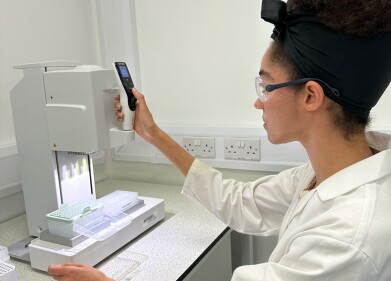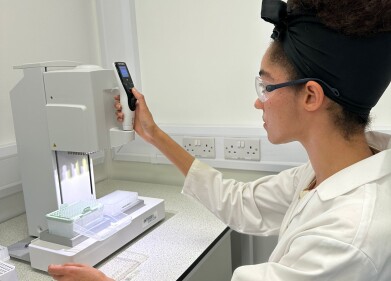Liquid handling
What is Automated Liquid Handling?
Jan 22 2022
From drug development and DNA sequencing to high throughput PCR testing, automated liquid handling has revolutionised the way modern laboratories operate. Next-generation technologies have made workflows more efficient than ever, allowing scientists to focus on innovation, data analysis and other critical tasks.
Below, we take a closer look at automated liquid handling and how the concept has transformed laboratories around the world.
Increasing walk-away time
Once of the key benefits of automated liquid handling systems has been the capacity to increase walk-away time for scientists. This allows scientists to spend less time carrying out manual tasks and more time utilising their unique skillsets.
Accelerating workflows
Automated liquid handling has been especially valuable for the drug development industry, allowing scientists to carry out the high throughput screening needed to discover new therapies. Automated liquid handling systems have also proved useful during the COVID-19 pandemic, with PCR testing labs relying on robotic systems to process huge volumes of samples.
Minimising human error
Even the most qualified and experienced scientists make errors in the laboratory. Automated liquid handling technologies minimise the risk of human error by delegating tasks to machines. This improves accuracy acros the board.
Reducing contamination
Automating liquid handling systems instantly reduce the risk of sample contamination by eliminating the need for human contact.
The role of automated liquid handling systems
Modern automated liquid handling systems are used to carry out a range of tasks, some simple and other more complex. Here’s a glimpse at some of the roles they take on in the laboratory:
-
Pipetting
Automated pipetting systems have eliminated the need to manually aspirate and dispense liquids in the laboratory. For example, epMotion 5070 and 5075 Automated Pipetting Systems from Eppendorf North America slash the time needed to transfer samples from individual tubes to microplates.
-
Sample preparation
Stem cell research is just one field where automated liquid handling systems are used to prepare samples. Automated liquid handling technologies are also used for Solid-Phase Extraction (SPE), a popular sample preparation method used for the food analysis and other applications.
-
Microplate washing
From cell-based assays to ELISA applications, automated liquid handling has made microplate washing faster and more efficient.
-
Liquid chromatography
The latest liquid chromatographic systems feature built-in automated injection modules to fast-track the process. Automated liquid handling technology is particularly useful for high-performance liquid chromatography (HPLC) in food analysis applications. The ultra-sensitive technique is used to detect additives and contaminants, identify ingredients, quantify nutritional components and carry out other analytical tasks.
Automated liquid handling systems have become a mainstay in laboratories of all calibres. By 2025, analysts predict the robotic liquid handling systems market will grow by 7% to reach US$4.65 billion. Find out more about the booming market in ‘Liquid Handling - What, Why & How?’
Digital Edition
Lab Asia 31.6 Dec 2024
December 2024
Chromatography Articles - Sustainable chromatography: Embracing software for greener methods Mass Spectrometry & Spectroscopy Articles - Solving industry challenges for phosphorus containi...
View all digital editions
Events
Jan 22 2025 Tokyo, Japan
Jan 22 2025 Birmingham, UK
Jan 25 2025 San Diego, CA, USA
Jan 27 2025 Dubai, UAE
Jan 29 2025 Tokyo, Japan



















